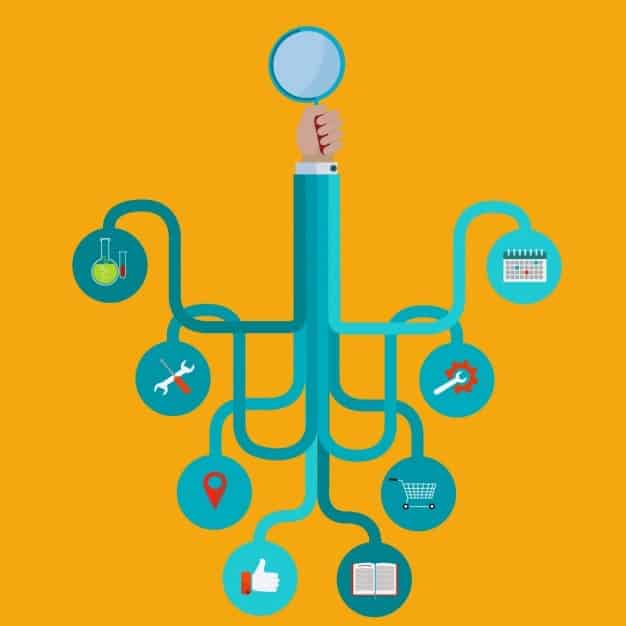Ethics Audit: A Step-by-Step Guide for US Businesses

An effective ethics audit systematically evaluates an organization’s compliance with ethical standards and policies, identifying potential risks and ensuring a robust ethical culture within US businesses.
In today’s complex business landscape, maintaining a strong ethical foundation is not just about compliance; it’s about building trust, fostering a positive workplace, and ensuring long-term sustainability. For businesses operating in the United States, understanding how to conduct an effective ethics audit: a step-by-step guide for US businesses has become indispensable. This comprehensive process allows organizations to proactively assess their ethical health, pinpoint vulnerabilities, and reinforce their commitment to integrity.
understanding the need for an ethics audit in US businesses
For US businesses, navigating the labyrinth of regulations, stakeholder expectations, and a demanding competitive environment makes an ethics audit more than a best practice—it’s a strategic imperative. Such an audit moves beyond mere legal compliance, delving into the very fabric of an organization’s values and behaviors. It’s an opportunity to critically assess how ethical principles are not just articulated, but truly lived and enforced across all levels.
The landscape of corporate ethics in the US is constantly evolving, influenced by high-profile corporate scandals, increasing public scrutiny, and a growing emphasis on Environmental, Social, and Governance (ESG) criteria. Businesses are now expected to demonstrate not only profitability but also social responsibility and ethical leadership. An ethics audit serves as a powerful diagnostic tool, offering a clear picture of where an organization stands ethically and where improvements are needed.
why ethics audits matter for US companies
The tangible benefits of a well-executed ethics audit extend far beyond simply avoiding legal penalties. These audits are crucial for fostering a culture of integrity, which in turn can lead to enhanced reputation, increased employee morale, and improved financial performance. Consider the rising importance of consumer trust and investor confidence; these are often directly linked to a company’s perceived ethical standing.
- 🚀 Enhanced Reputation: A strong ethical stance builds public trust and brand loyalty.
- ⚖️ Reduced Legal Risks: Proactive identification and mitigation of ethical breaches can prevent costly litigation and regulatory fines.
- 🤝 Improved Employee Morale: Employees are more engaged and productive in an ethical and transparent work environment.
- 📈 Attracted Investors: Ethical businesses often appeal to socially responsible investors, opening new funding avenues.
Furthermore, an ethics audit can help uncover “blind spots” – areas where ethical lapses might be occurring unknowingly or subtly. This proactive identification is vital in preventing minor issues from escalating into major crises. It reinforces the idea that ethics is not a static concept but a dynamic, ongoing commitment that requires continuous vigilance and refinement.
Ultimately, by undergoing a rigorous ethics audit, US businesses can solidify their commitment to a responsible and sustainable mode of operation. It’s about building a resilient organization that can withstand scrutiny and thrive on a foundation of integrity and trust, positioning itself as a leader in ethical governance.
phase 1: planning and preparation for your ethics audit
The success of any ethics audit hinges critically on thorough planning and preparation. This initial phase sets the stage, ensuring that the audit is comprehensive, focused, and aligned with the organization’s overarching strategic objectives. A poorly planned audit can miss critical areas, leading to inaccurate findings or, worse, a false sense of security regarding ethical compliance.
Before diving into data collection, it’s essential to clearly define the audit’s scope and objectives. What specific areas will be examined? What ethical risks are of particular concern? Are there any compliance issues that need immediate attention? These questions guide the entire process and ensure that resources are allocated effectively. For a US business, this might involve considering specific industry regulations, state laws, or even cultural nuances within the workforce that could impact ethical behavior.
defining the audit scope and objectives
Clarity in scope and objectives is paramount. This involves determining which departments, processes, or even geographical locations will be included. A comprehensive audit might cover everything from financial reporting and data privacy to workplace diversity and vendor relations. Conversely, a more focused audit might target a specific high-risk area, such as supply chain ethics or lobbying activities.
- 🎯 Identify high-risk areas within the business operation.
- 🔒 Specify compliance areas, such as anti-bribery, data privacy, or environmental regulations.
- 📊 Determine the time frame for the audit and the period under review.
- 📝 Outline the expected outcomes and deliverables of the audit.
Moreover, establishing clear objectives helps in measuring the audit’s effectiveness. Are you aiming to simply identify gaps, or do you intend to propose actionable recommendations for improvement? Understanding these objectives from the outset ensures that the audit team collects the most relevant data and provides truly valuable insights. In the US, where businesses often operate across state lines and different regulatory frameworks, tailoring the scope to specific operational realities is crucial.
Another key aspect of preparation is assembling the right audit team. This team should ideally be cross-functional, including individuals with expertise in ethics, compliance, legal, HR, and relevant operational areas. The team members should possess not only technical knowledge but also strong ethical awareness and the ability to conduct sensitive inquiries with integrity and discretion.

phase 2: data collection and analysis in an ethics audit
With the planning phase complete, the ethics audit moves into arguably its most critical stage: data collection and analysis. This phase requires a systematic approach to gather comprehensive information from various sources, followed by a rigorous analysis to identify patterns, risks, and areas for improvement. The quality and breadth of the data collected directly impact the accuracy and value of the audit’s findings.
Data collection isn’t just about reviewing documents; it involves understanding the lived experience of ethics within the organization. This means utilizing a mix of quantitative and qualitative methods to gain a holistic view. For US businesses, this might involve reviewing specific regulations from agencies like the SEC or OSHA, but also understanding the internal culture that shapes employee behavior.
gathering comprehensive information
A multi-pronged approach to data collection provides a more robust and nuanced understanding of an organization’s ethical landscape. Relying on a single source of information can lead to skewed perspectives or overlooked risks. The goal is to cross-reference data points to validate findings and identify inconsistencies.
- 📄 Document Review: Examine corporate policies, codes of conduct, training materials, complaint logs, and previous audit reports.
- 🗣️ Employee Interviews: Conduct confidential interviews with employees at various levels, from senior management to frontline staff, to gather perspectives on ethical culture, concerns, and awareness.
- 📝 Surveys and Questionnaires: Distribute anonymous surveys to a broader employee base to gauge perceptions of ethical climate, reporting mechanisms, and leadership commitment.
- 🔎 Process Observation: Observe daily operations to see if stated policies align with actual practices, particularly in areas prone to ethical dilemmas.
During interviews and surveys, it is vital to create a safe and confidential environment to encourage honest feedback. Employees should feel assured that their responses will not lead to retribution. This trust-building is crucial for uncovering hidden ethical issues or weaknesses in the compliance framework. For US businesses, this often involves careful consideration of legal protections for whistleblowers and ensuring anonymous reporting channels are truly anonymous.
Once data is collected, the analysis phase begins. This involves sifting through vast amounts of information to identify trends, outliers, and potential ethical breaches. Statistical analysis of survey data, thematic analysis of interview transcripts, and critical review of documents are all part of this process. The audit team should look for discrepancies between policies and practices, recurring themes in complaints, and areas where ethical training might be lacking or ineffective.
The analysis also involves comparing the organization’s ethical performance against industry best practices, regulatory requirements, and its own stated values. This benchmarking helps in understanding relative strengths and weaknesses. Ultimately, this rigorous data collection and analysis forms the backbone of the ethics audit, providing the necessary evidence to support future recommendations and improvements.
phase 3: identifying and assessing ethical risks
Once the data collection and analysis are complete, the next critical step in an ethics audit is to precisely identify and thoroughly assess the ethical risks that have come to light. This phase transforms raw data and observations into actionable insights, differentiating between minor issues and significant threats that could impact the organization’s reputation, legal standing, or financial stability. For US businesses, this often means understanding the nuances of federal and state regulations, as well as evolving societal expectations around corporate behavior.
Risk identification goes beyond merely listing observed problems; it involves understanding the root causes of ethical lapses and foreseeing potential future vulnerabilities. This requires a keen eye for systemic issues rather than focusing solely on individual incidents. It’s about asking “why” an ethical problem occurred and “how” it could be prevented from happening again, or from escalating.
categorizing and prioritizing risks
Not all ethical risks are created equal. Some may pose a minor threat, while others could lead to catastrophic consequences. Therefore, it’s essential to categorize and prioritize these risks based on their potential impact and likelihood of occurrence. This allows the organization to allocate resources effectively and address the most pressing issues first.
- Severty of Impact: Assess the potential damage (financial, reputational, legal) if the risk materializes.
- Likelihood of Occurrence: Estimate the probability of the ethical lapse happening based on past incidents, weak controls, or cultural factors.
- Regulatory Compliance: Identify risks that directly violate US laws or industry-specific regulations.
- Cultural Impact: Consider how the risk might erode internal trust or undermine the company’s ethical values.
A common approach is to use a risk matrix, plotting identified risks by their severity and likelihood. This visual tool helps in quick prioritization, highlighting “high-risk, high-likelihood” areas that demand immediate attention. For a US business, this might involve assessing risks related to FCPA (Foreign Corrupt Practices Act) violations, data breaches under CCPA/GDPR, or discrimination claims.
Furthermore, assessing risks involves looking at both internal and external factors. Internal factors might include inadequate training, a culture of pressure, or weak internal controls. External factors could involve intense market competition leading to unethical practices, unethical behavior by third-party partners, or evolving societal norms that clash with current company practices. It’s crucial to consider how these interplay to create a risk environment.
Ultimately, this phase culminates in a clear understanding of the organization’s ethical vulnerabilities. This comprehensive risk assessment forms the bedrock for developing targeted recommendations and implementing robust mitigation strategies, ensuring that the ethics audit leads to tangible improvements in ethical governance.
phase 4: developing recommendations and action plans
Once ethical risks have been identified and thoroughly assessed, the ethics audit transitions into its most constructive phase: developing clear, actionable recommendations and detailed action plans. This is where the audit’s findings are translated into tangible steps designed to mitigate risks, strengthen ethical practices, and foster a more robust culture of integrity. For US businesses, these recommendations must be practical, sustainable, and aligned with legal requirements and industry best practices.
The goal is to move beyond merely pointing out problems and instead offer pragmatic solutions. Recommendations should be specific, measurable, achievable, relevant, and time-bound (SMART). Vague suggestions like “improve ethical culture” are far less effective than concrete proposals such as “implement mandatory annual ethics training for all employees by Q3 2025.”
crafting effective mitigation strategies
Effective recommendations address the root causes of ethical issues, rather than just their symptoms. This often requires a multifaceted approach, combining changes in policy, processes, training, and leadership messaging. The audit team should collaborate with relevant departments to ensure that recommendations are feasible and can be integrated seamlessly into existing operations.
- Policy Revisions: Update or create new codes of conduct, conflict of interest policies, or anti-bribery guidelines.
- Training Programs: Implement targeted ethics training sessions for employees, management, and even third-party partners.
- Internal Controls: Strengthen oversight mechanisms, financial controls, and reporting systems to prevent misconduct.
- Communication Strategies: Enhance internal communication channels to promote ethical awareness and reporting mechanisms.
Each recommendation should be accompanied by a clear action plan. This plan typically outlines who is responsible for implementing the recommendation, what steps need to be taken, what resources are required, and a realistic timeline for completion. For US companies, this might involve ensuring compliance with specific federal guidelines, such as those from the Department of Justice regarding corporate compliance programs.

Furthermore, it’s crucial to establish metrics for success. How will the organization measure the effectiveness of the implemented changes? This could involve tracking the number of reported ethical concerns, analyzing employee survey data on ethical climate, or monitoring compliance rates with new policies. Without clear metrics, it becomes difficult to ascertain whether the recommendations have truly made a difference.
Beyond specific actions, recommendations should also consider fostering a continuous improvement mindset. Ethical governance is an ongoing journey, not a one-time event. The action plans should therefore include mechanisms for regular review and adjustment, ensuring that the organization remains agile in responding to evolving ethical challenges and regulatory landscapes, particularly relevant in the dynamic US business environment.
phase 5: reporting and follow-up
The culmination of an ethics audit is the reporting of findings and the establishment of a robust follow-up mechanism. This final phase ensures that the insights gained from the audit are effectively communicated to relevant stakeholders and that the recommended action plans are not only adopted but also continuously monitored for effectiveness. A comprehensive report and diligent follow-up are what transform an audit from a mere exercise into a powerful tool for ethical enhancement within US businesses.
The audit report serves as the official record of the audit’s findings, recommendations, and proposed action plans. It should be clear, concise, and objective, presenting the information in a way that is easily understandable by both executives and employees. The report needs to accurately reflect the data collected and analyses performed during the previous phases.
communicating findings and ensuring accountability
Effective communication of the audit findings is paramount. This involves tailoring the message to different audiences, from the board of directors who need strategic insights, to department heads who require specific action items. Transparency, while maintaining appropriate confidentiality, builds trust and reinforces the organization’s commitment to ethical conduct.
- Board and Executive Summary: A high-level overview of key risks and strategic recommendations.
- Detailed Findings: In-depth analysis of specific ethical issues, including supporting evidence.
- Action Plan Matrix: A clear table outlining each recommendation, responsible parties, timelines, and success metrics.
- Internal Communication: Workshops or town halls to discuss relevant findings and reiterate the importance of ethical behavior.
Equally important is establishing clear accountability for implementing the recommendations. Assigning specific individuals or teams responsibility for each action item, along with deadlines, is crucial. Regular check-ins and performance reviews should be integrated into the process to ensure progress is being made and obstacles are addressed promptly. For a US business, accountability often ties directly to corporate governance frameworks and, in some cases, to regulatory expectations for compliance programs.
The follow-up mechanism is where the real value of the ethics audit is realized over time. It involves monitoring the implementation of action plans, assessing their effectiveness, and making continuous adjustments as needed. This isn’t a one-and-done process; ethical landscapes are dynamic, and an organization’s ethical health requires ongoing vigilance.
Beyond initial implementation, the follow-up should involve periodic reviews to ensure that the changes have had the desired long-term impact. This could mean conducting mini-audits of specific areas, re-evaluating employee perceptions through subsequent surveys, or analyzing new ethical incidents to see if they stem from previously identified risks. A commitment to ongoing ethical self-assessment sets a US business apart as truly dedicated to integrity.
Ultimately, a successful report and follow-up mechanism ensure that the ethics audit is not just a snapshot in time but a catalyst for sustained ethical improvement. It reinforces the message that ethical conduct is a core value, continuously monitored and upheld throughout the organization.
integrating ethics into corporate culture: a continuous journey
Conducting an ethics audit is a significant undertaking, but its full value is realized only when its findings are leveraged to integrate ethics seamlessly into the corporate culture. For US businesses, this isn’t a destination but an ongoing journey, requiring continuous vigilance, adaptation, and reinforcement. A truly ethical company isn’t merely compliant; it embodies its values in every decision and action.
The audit provides a roadmap for ethical improvement, but the journey involves more than just checking off action items. It requires fostering an environment where ethical considerations are a natural part of daily operations and strategic planning. This means elevating ethics from a topic of compliance to a fundamental aspect of organizational identity, particularly within the diverse and dynamic US market.
fostering a culture of integrity and transparency
Building an ethical culture starts from the top. Leadership must consistently model ethical behavior and communicate its importance unequivocally. When employees see that ethical conduct is genuinely valued and rewarded, rather than just mandated, it significantly impacts their own choices and behaviors. Transparency in decision-making and open communication about ethical challenges further reinforce this commitment.
- Leadership Commitment: Executives consistently champion ethical values and make ethical decisions visible.
- Open Communication Channels: Encourage employees to speak up about concerns without fear of retaliation.
- Ethics Training and Awareness: Regular, engaging training programs that go beyond legal requirements to discuss practical ethical dilemmas.
- Recognition and Reinforcement: Acknowledge and reward ethical behavior, integrating it into performance reviews.
Integrating ethics also means embedding it into various internal processes. This includes incorporating ethical considerations into risk management frameworks, project planning, and even performance appraisal systems. When ethical performance becomes a metric, it signals its importance. For instance, in US companies, this might mean linking compliance with anti-harassment policies to managerial bonuses, or ethical sourcing practices to supplier contracts.
Moreover, the ethical landscape is constantly evolving. New technologies, global interconnectedness, and changing societal expectations introduce novel ethical dilemmas. Therefore, an ethical culture must be agile, ready to adapt and learn. Regular re-evaluation of ethical policies and practices, informed by continuing feedback and emerging trends, is crucial. This proactive stance ensures that a business remains ethically robust amidst change.
Ultimately, a continuous commitment to ethical integration ensures that the ethics audit is not just a reactive measure but a proactive part of an organization’s sustained success. It solidifies trust with stakeholders, enhances employee engagement, and builds a resilient business that can navigate complex challenges with integrity. For US businesses aiming for long-term prosperity, cultivating this ethical core is indispensable.
| Key Audit Phase | Brief Description |
|---|---|
| ✅ Planning & Preparation | Define audit scope, objectives, and assemble the audit team. |
| gathering data & Analyzing Data | Collect information via documents, interviews, surveys, and process observation. |
| 🚨 Identifying & Assessing Risks | Prioritize ethical risks based on impact and likelihood. |
| ⚙️ Reporting & Follow-Up | Communicate findings and monitor implementation of action plans. |
frequently asked questions about ethics audits
The primary purpose of an ethics audit for a US business is to systematically evaluate its ethical practices, identify potential risks, and ensure alignment with stated values and regulatory requirements. It helps to proactively strengthen the company’s ethical culture, reduce legal vulnerabilities, enhance reputation, and build trust among stakeholders. It moves beyond mere compliance to foster a genuinely ethical environment.
While there’s no fixed rule, most experts recommend that US businesses conduct a comprehensive ethics audit every two to three years. However, specific circumstances like significant organizational changes, negative ethical incidents, or major shifts in industry regulations might necessitate more frequent or targeted audits. Regular reviews ensure continuous improvement and adaptation to evolving ethical landscapes.
An effective ethics audit should involve a cross-functional team, ideally including internal personnel from legal, HR, compliance, and relevant operational departments, alongside external ethics consultants if available. This diverse inclusion ensures a comprehensive perspective, enhances objectivity, and provides specialized expertise in various areas of ethical risk and regulatory compliance specific to US business operations.
A well-executed ethics audit offers numerous benefits, including enhanced corporate reputation, increased employee morale and retention, reduced legal risks and costly fines, and improved financial performance due to investor confidence. It also fosters a proactive culture of integrity, identifying and mitigating ethical blind spots before they escalate into major crises, thereby securing long-term sustainability.
After an ethics audit, the audit team produces a detailed report outlining findings, identified risks, and actionable recommendations. This is followed by developing an action plan with assigned responsibilities and timelines for implementation. Crucially, a robust follow-up mechanism monitors the effectiveness of these actions, ensuring continuous ethical improvement and embedding integrity deeply within the corporate culture on an ongoing basis.
conclusion
For businesses in the United States, mastering the art of the ethics audit is no longer optional; it’s a fundamental pillar of sustainable success. This step-by-step guide underscores that an effective ethics audit is a meticulous process, moving from careful planning and comprehensive data collection to precise risk assessment, actionable recommendations, and crucial follow-up. It’s a testament to an organization’s commitment to integrity, fostering trust not only with its employees and customers but also with investors and regulatory bodies. Embracing this rigorous approach ensures that ethical principles are not just written policies, but deeply ingrained values that drive every decision, securing a resilient and reputable future in an increasingly discerning marketplace.





